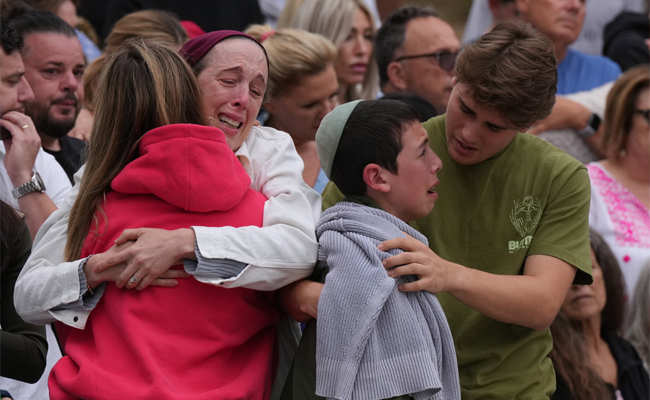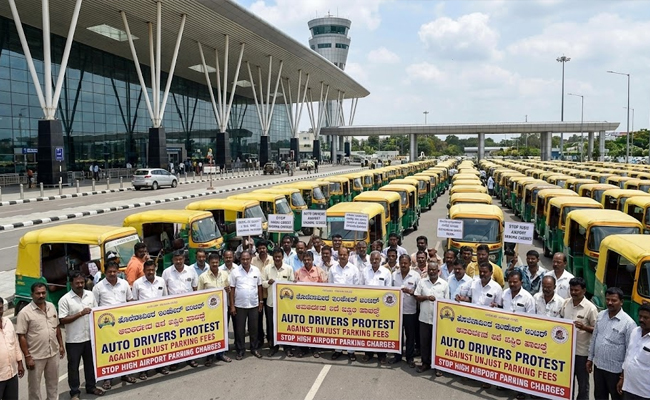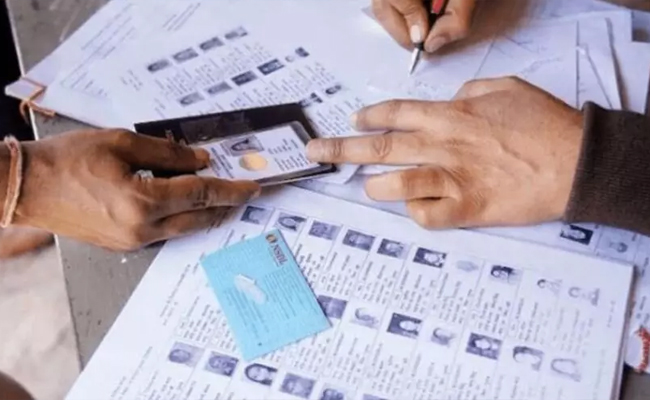Janakpur (Nepal), May 11: In a bid to mend ties with its Himalayan neighbour, Indian Prime Minister Narendra Modi arrived in Nepal on Friday on a two-day visit and launched the Janakpur-Ayodhya bus service besides pledging Rs 100 crore aid to develop Janakpur city.
Visiting Nepal for the first time since the 2015 border blockade blamed on India crippled Nepal's economy, Modi -- calling himself a pilgrim -- said his government gave top priority to relations with Kathmandu under his Neighbourhood First Policy.
He later held talks with Nepal President Bidhya Devi Bhandari where the two leaders renewed their commitment to take their relations to new heights.
The Indian leader kicked off his visit through Janakpur where he performed special prayers with his Nepali counterpart K.P. Sharma Oli at the Ram Janaki temple. Then they inaugurated the "Ramayan Circuit" to promote tourism in Nepal and India.
"This will act as a foundation for strong people-to-people ties between our two countries," Modi said. The circuit is a part of Modi's vision to build a 650-km connectivity project.
Modi told Oli that he was honoured "to be received you the way you welcomed me here".
"Mere Bhai, this welcome is an honour to all Indian citizens," Modi said. This is Modi's third visit to Nepal since he became Prime Minister in 2014.
The Indian leader described his visit as "that of a pilgrim rather than as a Prime Minister" and participated in the civic reception bestowed upon him by Janakpur Sub-Metropolitan City at the Rangabhumi Maidan. He was felicitated with a garland weighing 121 kg and a key to Janakpur city.
Addressing thousands, Modi said: "Ayodhya is incomplete without Janakidham. Similarly, Nepal is incomplete without India and India is incomplete without Nepal. Our ties are religious, based of deep faith and historical and complement to each others."
He began his speech in Maithali language followed by Bhojpuri and Nepali. He completed the rest of his address in Hindi. "Without Nepal, India's faith, belief and history are incomplete. Our 'Dhaam' is incomplete and Ram is also incomplete."
Modi announced assistance of Rs 100 crore for the development of Janakpur and said it will be added in the Ramayana Circuit while Lumbini will be included in the Buddhist Circuit.
Modi said he wanted to help Nepal to achieve development and prosperity, adding that he wanted to enhance better connectivity with Nepal through highways, information ways, transmission lines, railways, waterways and airways.
"We know that the regional development is connected with the development of Nepal... History is witness to the struggles faced together by India and Nepal. India is moving ahead to be one of the economic giants of the world and Nepal is following suit.
"These connectivity measures will help Nepal to get better market access, thereby encouraging the establishment of industries and employment creation."
He said the two sides can work on 5Ts -- Tradition, Trade, Tourism, Technology and Transport.
After completing his engagements in Janakpur, Modi arrived in Kathmandu where he was accorded a 21 gun salute and a guard of honour.
Modi paid a courtesy call on President Bhandari at the Rastrapati Bhawan and discussed matters relating to bilateral relations and mutual concern.
"The two leaders renewed their commitment to take our friendly relations to new heights, said External Affairs Ministry spokesperson Raveesh Kumar.
Similarly, Modi also called on Vice President Nanda Bahadur Pun and held a discussion with Nepali Foreign Minister Pradeep Gyawali about areas of mutual interest.
He was scheduled to hold one-one-one talks with Oli where various India funded projects in Nepal will be discussed followed by delegation level talks and joint press briefing. Modi will also lay the foundation stone of Arun III hydroelectricity project in Sankhuwasabha district in eastern Nepal, undertaken by India's Sutlej Jal Vidyut Nigam, through video conferencing.
Let the Truth be known. If you read VB and like VB, please be a VB Supporter and Help us deliver the Truth to one and all.
Melbourne (PTI): Three Indian students were among 40 people injured in the terrorist attack on Sydney's Bondi Beach in Australia, according to a media report on Tuesday.
Two out of these three students are believed to be receiving treatment in the hospital, The Australia Today news portal reported.
The names of the Indian students injured during Sunday's attack have not been disclosed yet.
ALSO READ: Affront to non-Hindi speaking people: Chidambaram slams use of Hindi words in bills' names
The Indian students sustained injuries during the shooting, and their exact condition has not been formally confirmed yet, it said.
Naveed Akram, 24, and his father, 50, opened fire on a gathering during the Jewish festival Hanukkah by the Sea celebration.
At least 15 people were killed in the attack, including a 10-year-old child. Five of the injured remain in critical condition, while two injured police officers are in serious but stable condition, it added.
New South Wales Police Commissioner Mal Lanyon said the investigation is expanding as new information emerges, including international travel by the alleged attackers and the discovery of extremist material, the report said.





